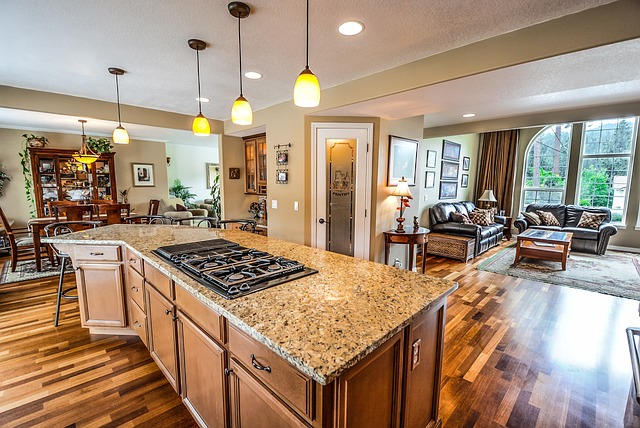If you’re deciding where a remodel will deliver the biggest impact, start with the rooms you use every day. Kitchens and bathrooms pack the most utility into the least space — and that’s why they’re the MVPs of home value, livability, and long-term resale. Below, we break down what homeowners should know (and how a professional contractor makes the difference).
Why Kitchens & Baths First?
-
Highest ROI: Historically, the best payback among interior projects because buyers value updated kitchens and clean, functional baths.
-
Daily quality of life: You feel the upgrade multiple times a day — better storage, better lighting, better flow.
-
Energy & water savings: Modern appliances and fixtures can cut utility costs while elevating the look.
Signs It’s Time to Remodel
-
You’re short on storage, counter space, or outlets.
-
Surfaces are stained, grout is failing, or cabinets are sagging.
-
Layout forces “traffic jams” (everyone collides at the fridge or sink).
-
Your bathroom ventilation is weak, showing up as lingering humidity or mildew.
-
Fixtures and finishes date the home (hello, 2000s builder-grade).
The Process (What to Expect With a Pro)
-
Discovery & Budget Fit – We align project scope to investment range and talk must-haves vs. nice-to-haves.
-
Design & Selections – Layout planning, elevations, and finish selections (cabinets, counters, tile, plumbing, lighting, hardware).
-
Permits & Scheduling – We handle permitting, order long-lead items, and lock a build schedule.
-
Protection & Demo – Dust control, floor protection, and clean demo to prep for rough-ins.
-
Mechanical Rough-Ins – Plumbing, electrical, HVAC, plus any framing changes.
-
Close-Ins & Surfaces – Insulation, drywall, cabinets, counters, tile, trim, paint.
-
Fixtures, Finals & Walkthrough – Set sinks/faucets, appliances, mirrors, lighting, hardware — then punch-list and a spotless hand-off.
Pro tip: Ordering cabinets, appliances, and custom glass early prevents the “everything’s ready except…” delays.
Kitchen Ideas That Work
-
Work Triangle → Work Zones: Think prep (sink), cook (range), clean (dishwasher), and landing zones around each.
-
Storage Upgrades: Deep drawers for pots, pull-out trash/recycling, spice pullouts, tray dividers, and a pantry cabinet you’ll actually use.
-
Lighting Layers: Recessed ceiling lights, task lighting under cabinets, and decorative pendants for style + function.
-
Countertop Choices:
-
Quartz for durability, low maintenance.
-
Granite for natural movement.
-
Butcher block as a warm accent island.
-
-
Flooring: LVP, engineered wood, or porcelain tile for durability and easy cleanup.
Bathroom Upgrades That Matter
-
Curbless Showers: Safer, cleaner lines, and future-friendly accessibility.
-
Tile That Handles Life: Porcelain or ceramic with epoxy grout in high-splash zones.
-
Ventilation: Quiet, right-sized exhaust fans with humidity sensors protect finishes and air quality.
-
Smart Storage: Medicine cabinets with outlets, drawer organizers, and tall linen towers.
-
Water-Wise Fixtures: EPA WaterSense faucets and dual-flush toilets save water without sacrificing performance.
Budgeting & Timeline (Realistic, Not Wishful)
-
Typical Ranges:
-
Pull-and-replace bath: starts around a modest range, depending on size and finishes.
-
Full kitchen: varies widely with cabinetry, countertops, and layout changes.
-
-
What moves the needle: Custom cabinets, moving plumbing or walls, specialty tile patterns, and high-end appliances.
-
Schedule: Design & selections (2–6 weeks), lead times (2–8+ weeks), construction (3–10 weeks depending on scope). The earlier we plan, the smoother it goes.
Codes, Permits, and Inspections (The Un-Glamorous Heroes)
A licensed contractor ensures the remodel is to code, permitted, and inspected — which protects you during resale and keeps insurance and warranties valid. DIY shortcuts here can get expensive fast.
Common Mistakes to Avoid
-
Design before budget: Set your investment range first so we can design to it.
-
Under-lighting the space: Great finishes need the right lighting to shine.
-
Forgetting function: Gorgeous islands that block the dishwasher aren’t a win.
-
Ignoring ventilation & waterproofing: Pay now or pay later (with interest).
-
Cutting corners on labor: Quality installation is what makes quality materials look… well, quality.
How to Choose the Right Contractor
-
Portfolio: Look for kitchens/baths similar to your style and size.
-
References & Reviews: Ask about communication, cleanliness, and schedule accuracy.
-
Transparent Bids: Clear line-items and allowances prevent surprises.
-
Process Fit: Do they manage permits, scheduling, and site protection? They should.
Ready to Start?
If you’re dreaming about more storage, better lighting, and a layout that finally makes sense, we’d love to help. Book a free in-home or virtual consultation to discuss your goals, budget, and timeline — and get a realistic, professional plan.
How long does a typical bathroom remodel take?
A straightforward hall bath can be 2–4 weeks after materials arrive; primary suites with custom tile and glass can run 4–8+ weeks.
Can we live at home during a kitchen remodel?
Usually yes. We set up a temporary kitchen, manage dust, and keep pathways clear. Complex structural changes may require short periods away.
What’s the most durable countertop?
Quartz is a top pick for stain and scratch resistance with minimal upkeep.
Do I need permits?
If we’re moving plumbing/electrical, changing walls, or altering mechanical systems — yes. We’ll handle it.
What upgrades add the most value?
In kitchens: layout improvements, quality cabinets, quartz counters, and lighting. In baths: tiled showers, new ventilation, and water-wise fixtures.

